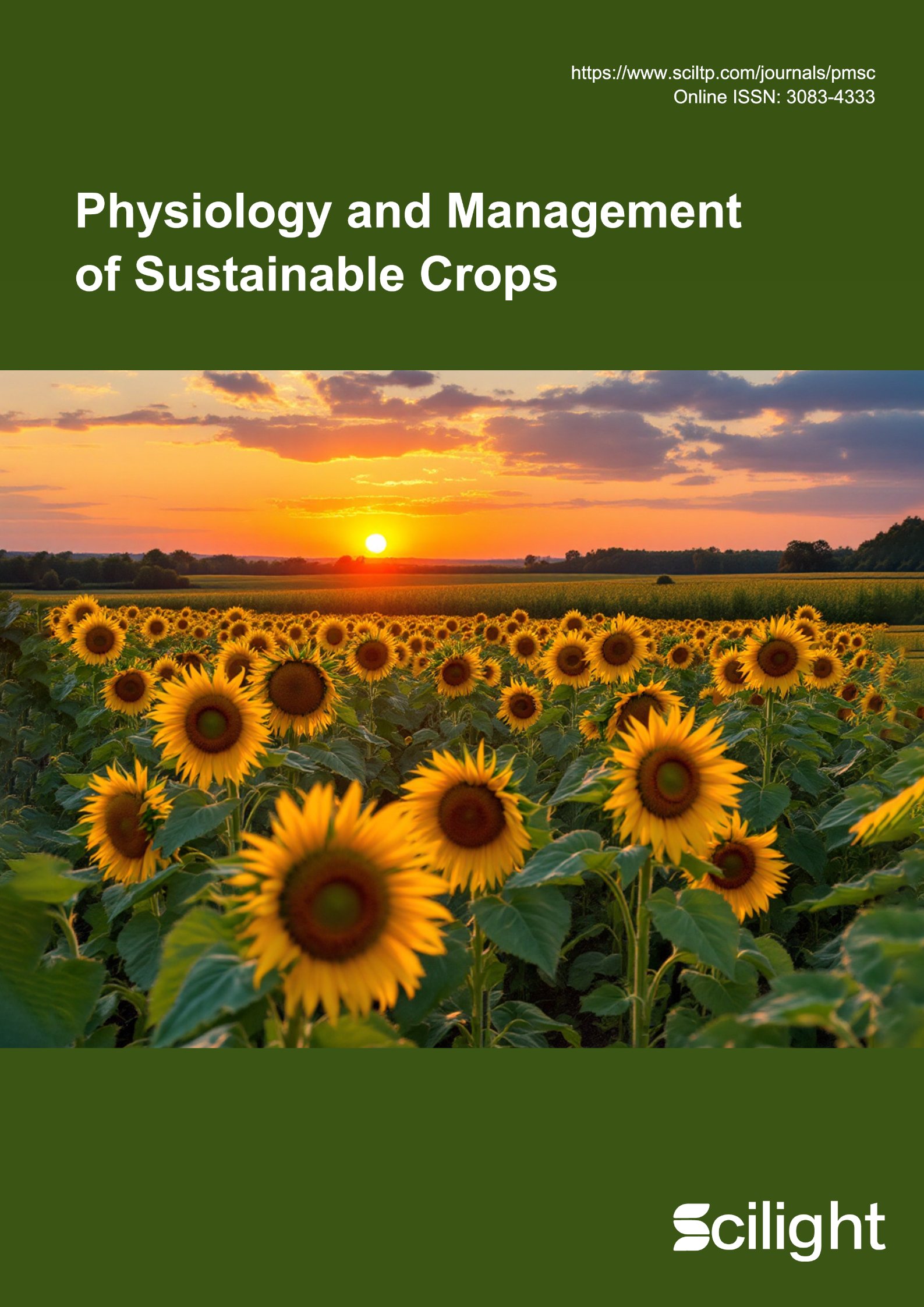The world population is continuously increasing. Increases in crop productivity are needed to fulfil food demands, although this approach is not the only solution to the problem. Yields below 2.4% of productivity increase per year would risk food security and lead to prices much higher than reasonable. Advances in potential yield and through yield gap closing are required. In addition, climate change threatens global food production and end-product quality. Setting aside extreme events, such as prolonged droughts or floods, the three main factors associated with climate change are increased temperatures, the rainfall reduction, and the increased atmospheric CO2 concentration. All these three factors impact food production and its quality. Growers should adapt to this new scenario. The key to success in feeding the world’s population in a changing climate will be to achieve a global farmer community with proper skills, an informed population and well-oriented research.
- Open Access
- Opinion
What Would It Take to Continue Feeding the World’s Population? From Family Farming to a New, More Plural, Diverse and Technological Model of Producing Foods
- Fermín Morales
Author Information
Received: 13 Feb 2025 | Revised: 06 May 2025 | Accepted: 07 May 2025 | Published: 09 May 2025
Abstract
Keywords
climate change | crop breeding | crop yield and quality | food production | world’s population
References
- 1.Department of Economic and Social Affairs, Population Division, United Nations. World Population Prospects: The 2017 Revision, Key Findings and Advance Tables. Working Paper No. ESA/P/WP/248. 2017. Available online: https://esa.un.org/unpd/wpp/publications/Files/WPP2017_KeyFindings.pdf (accessed on 16 December 2019).
- 2.Fischer, R.A.; Byerlee, D.; Edmeades, G.O. Crop Yields and Global Food Security: Will Yield Increase Continue to Feed the World?ACIAR Monograph No. 158; Australian Center for International Agricultural Research: Canberra, Australia, 2014.
- 3.Alexandratos, N.; Bruinsma, J. World Agriculture towards 2030/2050: The 2012 Revision; ESA Working Paper No. 12–03; FAO: Rome, Italy, 2012.
- 4.Ray, D.K.; Mueller, N.D.; West, P.C.; et al. Yield trends are insufficient to double global crop production by 2050. PLoS ONE2013, 8, e66428.
- 5.Ray, D.K.; Ramankutty, N.; Mueller, N.D.; et al. Recent patterns of crop yield growth and stagnation. Commun.2012, 3, 1293.
- 6.Araus, J.L.; Cairns, J.E. Field high-throughput phenotyping: the new crop breeding frontier. Trends Plant Sci.2014, 19, 52–61.
- 7.Contribution of Working Group I to the Third Assessment Report of the Intergovernmental Panel on Climate Change. In Climate Change 2001: The Scientific Basis; Houghton, J.T., Ding, Y., Griggs, D.J., et al., Eds.; Cambridge University Press: Cambridge, UK, 2001; p. 881.
- 8.Contribution of Working Group III to the Fifth Assessment Report of the Intergovernmental Panel on Climate Change. In Climate Change 2014: Mitigation of Climate Change; Edenhofer, O., Pichs-Madruga, R., Sokona, Y., et al., Eds.; Cambridge University Press: Cambridge, UK, 2014.
- 9.Contribution of Working Group I to the Fifth Assessment Report of the Intergovernmental Panel on Climate Change; In Climate Change 2013: The Physical Science Basis; Stocker, T., Qin, D., Plattner, G., et al., Eds.; Cambridge University Press: Cambridge, UK, 2013.
- 10.Contribution of Working Groups I, II and III to the Fourth Assessment Report of the Intergovernmental Panel on Climate Change. In Climate Change 2007: Synthesis Report; Core Writing Team, Pachauri, R.K., Reisinger, A., Eds.; IPCC: Geneva, Switzerland, 2007; p. 104.
- 11.Meehl, G.A.; Covey, C.; Delworth, T.; et al. The WCRP CMIP3 multimodel dataset—A new era in climate change research. Am. Meteorol. Soc.2007, 88, 1383–1394.
- 12.Arnell, N.W. Climate change and global water resources. Environ. Chang.1999, 9, 31–49.
- 13.Stone, P. The effects of heat stress on cereal yield and quality. In Crop Responses and Adaptations to Temperature Stress; Basra, A.S., Ed.; Food Products Press: Binghamton, NY, USA, 2001; pp. 243–291.
- 14.Schlenker, W.; Roberts, M.J. Nonlinear temperature effects indicate severe damages to US crop yields under climate change. Natl. Acad. Sci. USA2009, 106, 15594–15598.
- 15.Hatfield, J.L.; Prueger, J.H. Temperature extremes: Effect on plant growth and development. Weather Clim. Extrem.2015, 10, 4–10.
- 16.Akter, N.; Islam, M.R. Heat stress effects and management in wheat. A review. Sustain. Dev.2017, 37, 37.
- 17.Zhao, C.; Liu, B.; Piao, S.; et al.Temperature increase reduces global yields of major crops in four independent estimates. Nat. Acad. Sci USA 2017, 114, 9326–9331.
- 18.Kizildeniz, T.; Pascual, I.; Irigoyen, J.J.; et al. Using fruit-bearing cuttings of grapevine and temperature gradient greenhouses to evaluate effects of climate change (elevated CO2and temperature, and water deficit) on the cv. red and white Tempranillo. Yield and must quality in three consecutive growing seasons (2013–2015). Water Manag. 2018, 202, 299–310.
- 19.Ben Mariem, S.; Soba, D.; Zhou, B.; et al. Climate change, crop yields and grain quality of C3 cereals: A meta-analysis of [CO2], temperature and drought effects. Plants2021, 10, 1052.
- 20.Lesk, C.; Rowhani, P.; Ramankutty, N. Influence of extreme weather disasters on global crop production. Nature2016, 529, 84–87.
- 21.Ahmad, Z.; Waraich, E.A.; Akhtar, S.; et al. Physiological responses of wheat to drought stress and its mitigation approaches. Acta Physiol. Plant2018, 40, 80.
- 22.Daryanto, S.; Wang, L.; Jacinthe, P.A. Global synthesis of drought effects on cereal, legume, tuber and root crops production: A review. Water Manag.2017, 179, 18–33.
- 23.Farooq, M.; Wahid, A.; Kobayashi, N.; et al. Review article Plant drought stress: Effects, mechanisms and management. Sustain. Dev.2009, 29, 185–212.
- 24.Lobell, D.B.; Gourdji, S.M. The influence of climate change on global crop productivity. Plant Physiol.2012, 160, 1686–1697.
- 25.Kang, Y.; Khan, S.; Ma, X. Climate change impacts on crop yield, crop water productivity and food security—A review. Nat. Sci.2009, 19, 1665–1674.
How to Cite
Morales, F. What Would It Take to Continue Feeding the World’s Population? From Family Farming to a New, More Plural, Diverse and Technological Model of Producing Foods. Physiology and Management of Sustainable Crops 2025, 1 (1), 2. https://doi.org/10.53941/pmsc.2025.100002.
RIS
BibTex
Copyright & License

Copyright (c) 2025 by the authors.
This work is licensed under a Creative Commons Attribution 4.0 International License.
Contents
References


